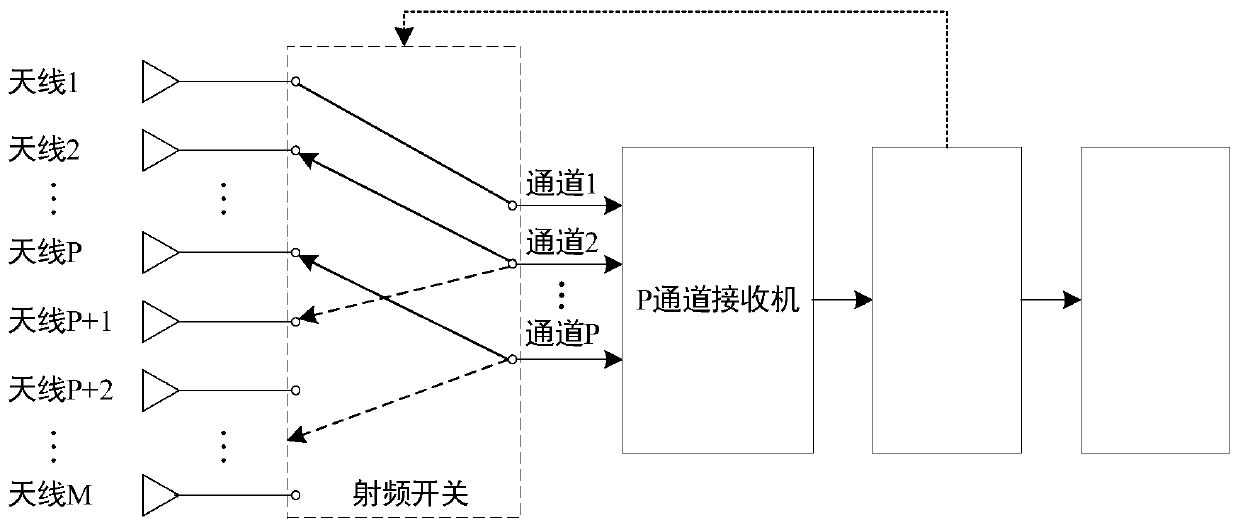Under-channel direction finding system and method based on Toeplitz matrix recovery
A matrix recovery and channel technology, applied in the field of spatial spectrum estimation, can solve problems such as large amount of calculation, difficult implementation, and difficult control of radio frequency bands, and achieve the effect of simplifying implementation
- Summary
- Abstract
- Description
- Claims
- Application Information
AI Technical Summary
Problems solved by technology
Method used
Image
Examples
Embodiment Construction
[0041] The present invention will be further explained below in conjunction with the accompanying drawings.
[0042] Such as figure 1 As shown, the underchannel direction finding system based on Toeplitz matrix recovery of the present invention includes a uniform line array containing M omnidirectional antennas, a P channel receiver, P-1 multi-channel radio frequency switching switches, a synchronous timing controller, and a signal Acquisition processor, spectrum estimation and direction finding module; wherein: the number of receiver channels is less than the number of antennas, that is, P<M.
[0043] The uniform linear array of the omnidirectional antenna is connected to the receiver through a multi-channel radio frequency switching switch, and the receiver is connected to the signal acquisition processor and the spectrum estimation direction finding module in turn, and the synchronous timing controller is connected between the signal acquisition processor and the multi-chan...
PUM
 Login to View More
Login to View More Abstract
Description
Claims
Application Information
 Login to View More
Login to View More - R&D
- Intellectual Property
- Life Sciences
- Materials
- Tech Scout
- Unparalleled Data Quality
- Higher Quality Content
- 60% Fewer Hallucinations
Browse by: Latest US Patents, China's latest patents, Technical Efficacy Thesaurus, Application Domain, Technology Topic, Popular Technical Reports.
© 2025 PatSnap. All rights reserved.Legal|Privacy policy|Modern Slavery Act Transparency Statement|Sitemap|About US| Contact US: help@patsnap.com



